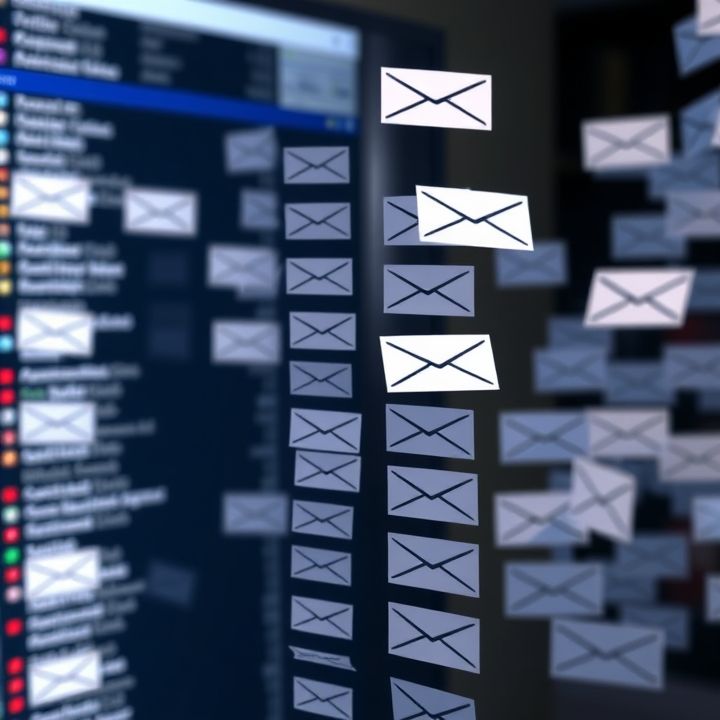Table of Contents
- Introduction
- Understanding the Importance of Segmentation in Email Marketing
- Identifying Key User Behavior Metrics for Effective Segmentation
- Leveraging User Preferences to Tailor Email Campaigns
- Utilizing Purchase History for Targeted Messaging
- The Role of Engagement Levels in Segmentation Strategies
- Incorporating Demographic Data for More Accurate Segments
- Testing and Refining Segmentation Strategies for Better Results
- Tools and Technologies to Aid in Advanced List Segmentation
- Conclusion
- Frequently Asked Questions
Introduction
Imagine transforming your email campaigns from run-of-the-mill to top-of-mind. The secret? Powerful list segmentation. By mastering this art, you can propel your email engagement rates to exhilarating new heights. Before diving into the depths of expert techniques, envision a world where each email resonates personally with your audience, leading to more opens, clicks, and conversions.
Consider this:
| Without Segmentation | With Segmentation |
|---|---|
| 20% Open Rate | 35% Open Rate |
| 5% Click Rate | 15% Click Rate |
The numbers speak for themselves. With the average attention span shrinking, capturing your audience’s interest is crucial—segmentation is the key.
Get ready to delve into the nuances of list segmentation, uncover the best strategies, and feel the thrill of watching your email stats surge. Your journey to mastering email engagement starts here—await the juicy, expert-revealed secrets ahead.
Understanding the Importance of Segmentation in Email Marketing
Understanding the importance of segmentation in email marketing is crucial for any business aiming to enhance its communication strategy. Segmentation involves dividing an email list into specific groups based on shared characteristics, interests, or behaviors. This targeted approach allows for more personalized and relevant content, which can significantly improve engagement rates. When emails are tailored to meet the specific needs and preferences of different audience segments, recipients are more likely to interact with the content, increasing open and click-through rates.
Another important aspect of segmentation is its role in nurturing customer relationships. By sending relevant messages, businesses can build trust and loyalty among their audience, ultimately leading to higher conversion rates and customer retention. Moreover, effective segmentation helps in reducing unsubscribe rates and minimizes the risk of emails being marked as spam.
Analyzing user behavior, preferences, and demographics provides valuable insights that can aid in creating targeted marketing campaigns. As a result, segmentation not only optimizes marketing efforts but also enhances the overall effectiveness of email campaigns, making it a fundamental component of successful email marketing strategies.
Identifying Key User Behavior Metrics for Effective Segmentation
When it comes to segmenting your email list effectively, understanding key user behavior metrics is crucial. These metrics offer deep insights into how your subscribers interact with your emails and your business, allowing you to tailor your marketing strategies accordingly.
First, consider tracking open rates. This metric reveals the percentage of subscribers who open your emails, helping you understand the effectiveness of your subject lines and overall email engagement. Higher open rates indicate a strong connection with your audience.
Next, focus on click-through rates (CTR), which show how often people click on links within your emails. CTR is a strong indicator of content relevance and engagement. By analyzing CTR, you can identify which types of content resonate most with your audience.
Another important metric is conversion rates. These indicate the percentage of email recipients who take the desired action, whether it’s making a purchase, signing up for a webinar, or downloading a resource. Conversion rates help you measure the ROI of your email campaigns and segmentation strategies.
Pay attention to user preferences, such as email frequency and content type, by analyzing past interactions and surveys. This information can help you create highly personalized segments that cater to specific subscriber needs and interests.
Leveraging User Preferences to Tailor Email Campaigns
Leveraging user preferences is a powerful way to tailor email campaigns and boost engagement. By understanding your subscribers’ interests, you can deliver content that resonates with them on a personal level. Start by collecting data such as browsing history, purchase behavior, and other interaction metrics. This information provides crucial insights into what your audience values, allowing you to segment your email list accordingly.
Once you have segmented your list, create personalized content for each group. For instance, if you notice a segment of users frequently purchases eco-friendly products, consider crafting emails that highlight sustainable options. Providing content that aligns with user preferences increases the likelihood of opens, clicks, and conversions. It’s also important to regularly review and update these segments to ensure they remain relevant as user behavior evolves.
Additionally, invite subscribers to update their preferences through surveys or preference centers. Giving them control over the content they receive not only enhances the user experience but also boosts loyalty and satisfaction. By continuously adapting to your audience’s changing needs, you maintain relevance and demonstrate that you value their unique preferences, ultimately fostering a stronger relationship with your subscribers.
Utilizing Purchase History for Targeted Messaging
Utilizing purchase history for targeted messaging is an effective strategy for segmenting your email list and personalizing communication with your customers. By analyzing past purchase data, businesses can identify customer preferences, buying habits, and product affinity, enabling them to craft messages that resonate on a more personal level. For instance, if a segment of your audience frequently purchases a particular product category, you can tailor your email campaigns to highlight new arrivals or promotions in that category, thereby increasing the likelihood of engagement and repeat purchases.
Additionally, purchase history allows for the identification of high-value customers, who can then be targeted with exclusive offers, loyalty rewards, or early access to new products. This not only enhances customer satisfaction but also fosters brand loyalty and increases lifetime value. Furthermore, by observing the frequency and timing of purchases, businesses can predict when a customer might be ready to buy again and send timely reminders or personalized recommendations to encourage a purchase.
When purchase history is effectively utilized in email marketing, it transforms generic communications into tailored experiences that speak directly to the needs and desires of individual customers, thus driving engagement and boosting conversion rates.
The Role of Engagement Levels in Segmentation Strategies
Engagement levels play a crucial role in crafting effective segmentation strategies for email marketing. By analyzing how actively your subscribers interact with your emails, you can tailor your communication to better fit their interests and behaviors. High engagement levels often indicate that a subscriber is more interested and invested in your content, making it worthwhile to send them personalized offers, exclusive content, or rewards. This can help in nurturing these subscribers into loyal customers.
Conversely, low engagement levels may suggest that the content isn’t resonating with the subscriber, presenting an opportunity to re-engage them with different strategies. This might include revisiting the frequency of your emails, adjusting the type of content you are sending, or even directly asking for feedback through surveys. By targeting these segments specifically, you can improve your overall engagement rates and reduce unsubscribe rates.
Moreover, segmenting by engagement levels enables a more targeted approach, ensuring that your marketing efforts are focused on the individuals who are most likely to respond positively. Emails that reflect a subscriber’s level of activity not only enhance the customer experience but also increase the efficiency of your email marketing campaigns.
Incorporating Demographic Data for More Accurate Segments
Incorporating demographic data is crucial for creating more accurate and effective email list segments. By understanding the demographics of your audience, such as age, gender, income level, and occupation, you can tailor your messages to resonate with specific groups. This not only enhances engagement but also increases the likelihood of conversion.
To utilize demographic data, begin by collecting relevant information during the signup process or through surveys. Analyzing this data allows you to identify patterns and preferences unique to each demographic segment. For instance, younger subscribers might be more interested in trendy products, while older audiences might prioritize value and reliability.
Additionally, demographic segmentation helps in crafting personalized content that speaks directly to the needs and interests of each group. For example, an email campaign for a retirement planning service should differ significantly for millennials compared to Generation X.
By combining demographic insights with behavioral data, you can achieve a more comprehensive understanding of your audience, leading to precise and impactful communication strategies. Ultimately, incorporating demographic data is a critical step in developing an email marketing strategy that connects and converts effectively.
Testing and Refining Segmentation Strategies for Better Results
Testing and refining segmentation strategies is crucial for achieving optimal email marketing results. Initially, it’s essential to gather sufficient data on user behavior and preferences. Analyzing factors such as purchase history, click-through rates, and engagement levels can provide valuable insights. Once the data is collected, marketers can develop hypotheses on potential segments and conduct A/B testing to evaluate the effectiveness of different strategies. A/B testing involves sending variant emails to subsets of your audience and measuring which version delivers the best results, such as higher open rates or click-through rates.
Regularly assessing the outcomes of these tests allows marketers to pinpoint what works best for each segment. It’s not a static process; rather, it requires ongoing adjustments as consumer preferences and behaviors evolve. Keeping up with these changes ensures that your segmentation remains relevant and effective. Additionally, incorporating feedback from recipients can offer further refinement opportunities, ensuring that the segments are as tailored as possible.
Ultimately, a focus on continuous improvement in segmentation strategies will enhance the personalization of email content, foster stronger customer relationships, and drive better engagement and conversion rates over time.
Tools and Technologies to Aid in Advanced List Segmentation
Effective email list segmentation can be significantly enhanced by leveraging the right tools and technologies. Customer Relationship Management (CRM) systems, for instance, offer robust features to segment lists based on detailed user data and past interactions. With CRMs, you can easily track purchase histories, browsing behaviors, and engagement levels to craft more targeted campaigns. Marketing automation platforms like Mailchimp, HubSpot, and ActiveCampaign provide advanced segmentation options that allow you to build dynamic lists based on user actions, preferences, and interests. These tools use algorithms to adapt and update lists automatically as user behaviors change.
Moreover, utilizing data analytics tools like Google Analytics or Kissmetrics can provide deep insights into user behavior and preferences, helping you refine your segmentation strategy. These analytics tools can dissect customer journeys and highlight specific touchpoints that can be critical for effective segmentation. Lastly, leveraging artificial intelligence and machine learning technologies can further enhance your ability to predict customer needs and preferences, facilitating more personalized and relevant communication. Employing these technologies ensures that your email marketing campaigns are more efficient, targeted, and ultimately, more successful.
Conclusion
In conclusion, mastering email list segmentation is a pivotal strategy for any business seeking to enhance its email marketing efforts. By meticulously analyzing user behavior metrics, leveraging user preferences, and incorporating detailed demographic data, businesses can create finely-tuned segments that drive engagement and conversions. The use of purchase history and engagement levels further refines these efforts, ensuring communications are both personalized and timely.
Advanced tools and technologies, such as CRM systems and marketing automation platforms, empower marketers to automate and refine these segmentation processes efficiently. As segmentation strategies continue to evolve with ongoing testing and refinement, businesses can expect to see not only improved open and click-through rates but also stronger customer relationships and loyalty.
Ultimately, successful email segmentation transforms generic marketing campaigns into targeted, engaging experiences that resonate with individual subscribers, thereby maximizing the impact of email marketing initiatives. By embracing these best practices, businesses can unlock the secrets to skyrocketing email engagement and achieve their marketing goals with precision and efficacy.

